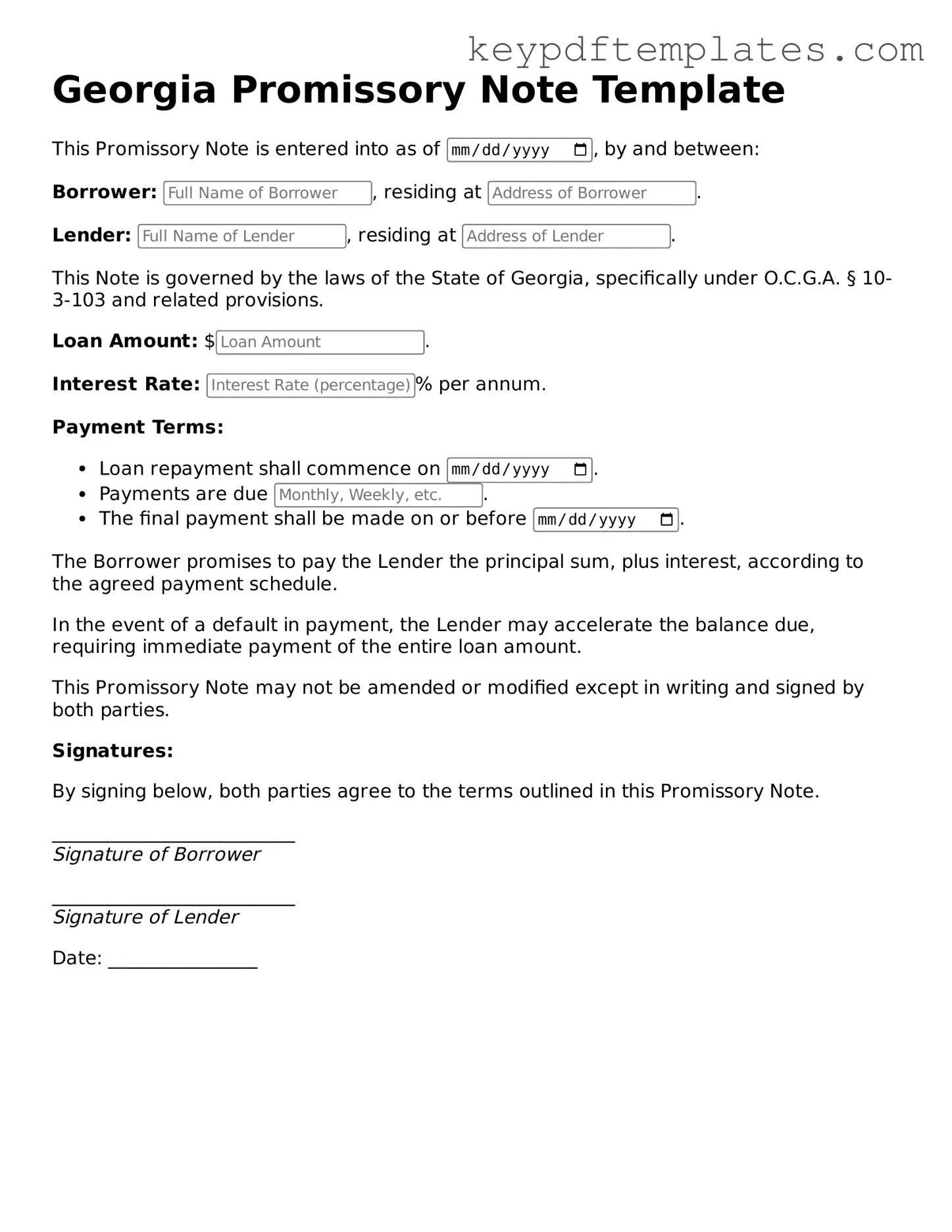Legal Promissory Note Document for the State of Georgia
A Georgia Promissory Note is a legal document that outlines a borrower's promise to repay a specified amount of money to a lender under agreed-upon terms. This form serves as a crucial tool for individuals and businesses engaging in lending transactions, providing clarity and security for both parties involved. Understanding the nuances of this document can help ensure a smooth borrowing process and protect the interests of all stakeholders.
Modify Document Online
